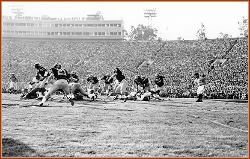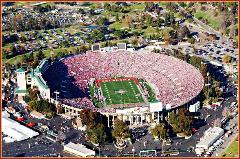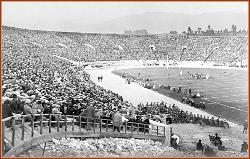



The Lloyd Noble Center is an 11,528-seat multi-purpose arena in Norman, Oklahoma, some 19-miles south of downtown Oklahoma City. The
arena opened in 1975. It is home to the University of Oklahoma Sooners men's and women's basketball teams.
Before the construction of the facility, the teams played in the much smaller OU Field House, located on campus near Oklahoma Memorial
Stadium. With the success of Sooner basketball in the 1970s and star forward Alvan Adams, demand became sufficient to upgrade to the
modern and spacious Lloyd Noble Center, named after an alumnus and former member of the OU Board of Regents who gave OU's first ever $1
million gift to finance the center. The Sooners frequently sold out the arena during the Billy Tubbs era, with All-American forward Wayman
Tisdale leading the high-scoring team to several Big Eight Conference titles and NCAA Tournament appearances. This led to the popular
colloquialism around Norman that Lloyd Noble Center is "the house that Alvan built and Wayman filled."
In January 2006, after the NBA's New Orleans/Oklahoma City Hornets decided to move two games from the Pete Maravich Assembly Center in
Baton Rouge because of low attendance, the Ford Center in Oklahoma City was unavailable for one of the game against the Sacramento Kings,
so it was moved to the Lloyd Noble Center.
The Fieldhouse is still home to the university's volleyball and wrestling teams, and hosts a number of other on-campus gatherings. It is rather
unknown these days on campus that the Fieldhouse once witnessed concerts by the likes of Jimi Hendrix, Frank Sinatra, and Elvis Presley in the
1960s and 1970s.
As a concert venue, the Lloyd Noble Center can hold between 2,848 and 4,516 in a theater set-up, 8,519 for end-stage concerts, and 11,205 for
center-stage concerts. The arena contains 18,000 square feet of arena floor space as well as 22,534 square feet of concourse space, allowing
for trade shows to be held at the arena. The arena stands only 51 feet tall since the majority of the structure is under ground (including the
entire lower arena level), and contains a 40-by-60-foot portable stage and a state-of-the-art scoreboard and video system. There are 12
concession stands at the concourse.






